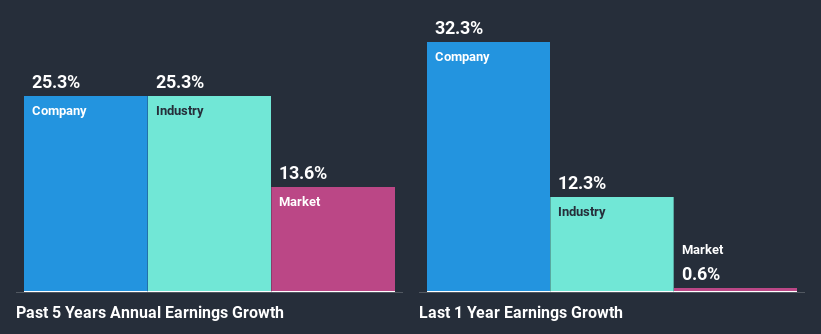Is Microsoft Corporation's(NASDAQ:MSFT) Recent Stock Performance Tethered To Its Strong Fundamentals?

Want to participate in a short research study? Help shape the future of investing tools and earn a $40 gift card!
Microsoft's (NASDAQ:MSFT) stock is up by a considerable 19% over the past three months. Given that the market rewards strong financials in the long-term, we wonder if that is the case in this instance. In this article, we decided to focus on Microsoft's ROE.
Return on equity or ROE is an important factor to be considered by a shareholder because it tells them how effectively their capital is being reinvested. In simpler terms, it measures the profitability of a company in relation to shareholder's equity.
View our latest analysis for Microsoft
How Is ROE Calculated?
ROE can be calculated by using the formula:
Return on Equity = Net Profit (from continuing operations) ÷ Shareholders' Equity
So, based on the above formula, the ROE for Microsoft is:
40% = US$46b ÷ US$115b (Based on the trailing twelve months to March 2020).
The 'return' is the amount earned after tax over the last twelve months. That means that for every $1 worth of shareholders' equity, the company generated $0.40 in profit.
Why Is ROE Important For Earnings Growth?
So far, we've learned that ROE is a measure of a company's profitability. We now need to evaluate how much profit the company reinvests or "retains" for future growth which then gives us an idea about the growth potential of the company. Assuming all else is equal, companies that have both a higher return on equity and higher profit retention are usually the ones that have a higher growth rate when compared to companies that don't have the same features.
Microsoft's Earnings Growth And 40% ROE
To begin with, Microsoft has a pretty high ROE which is interesting. Additionally, the company's ROE is higher compared to the industry average of 12% which is quite remarkable. As a result, Microsoft's exceptional 25% net income growth seen over the past five years, doesn't come as a surprise.
As a next step, we compared Microsoft's net income growth with the industry and found that the company has a similar growth figure when compared with the industry average growth rate of 25% in the same period.
Earnings growth is an important metric to consider when valuing a stock. What investors need to determine next is if the expected earnings growth, or the lack of it, is already built into the share price. Doing so will help them establish if the stock's future looks promising or ominous. If you're wondering about Microsoft's's valuation, check out this gauge of its price-to-earnings ratio, as compared to its industry.
Is Microsoft Efficiently Re-investing Its Profits?
Microsoft's three-year median payout ratio is a pretty moderate 47%, meaning the company retains 53% of its income. This suggests that its dividend is well covered, and given the high growth we discussed above, it looks like Microsoft is reinvesting its earnings efficiently.
Besides, Microsoft has been paying dividends for at least ten years or more. This shows that the company is committed to sharing profits with its shareholders. Our latest analyst data shows that the future payout ratio of the company is expected to drop to 30% over the next three years. Regardless, the ROE is not expected to change much for the company despite the lower expected payout ratio.
Summary
In total, we are pretty happy with Microsoft's performance. Specifically, we like that the company is reinvesting a huge chunk of its profits at a high rate of return. This of course has caused the company to see substantial growth in its earnings. That being so, a study of the latest analyst forecasts show that the company is expected to see a slowdown in its future earnings growth. Are these analysts expectations based on the broad expectations for the industry, or on the company's fundamentals? Click here to be taken to our analyst's forecasts page for the company.
This article by Simply Wall St is general in nature. It does not constitute a recommendation to buy or sell any stock, and does not take account of your objectives, or your financial situation. We aim to bring you long-term focused analysis driven by fundamental data. Note that our analysis may not factor in the latest price-sensitive company announcements or qualitative material. Simply Wall St has no position in any stocks mentioned.
Have feedback on this article? Concerned about the content? Get in touch with us directly. Alternatively, email editorial-team@simplywallst.com.

 Yahoo Finance
Yahoo Finance 
